#9 April 1917
Text


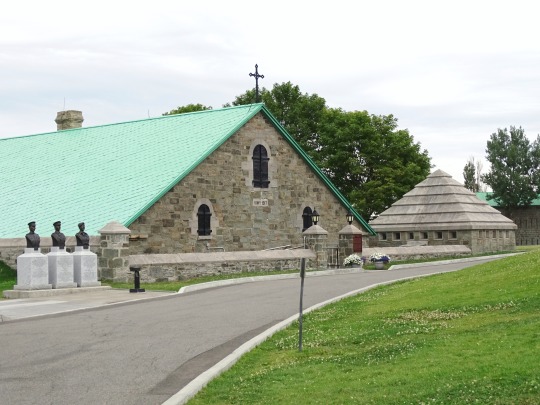
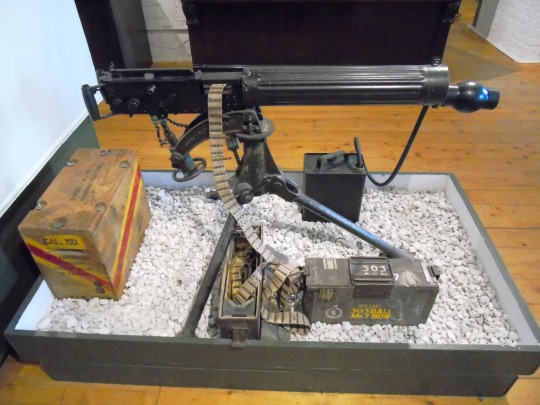
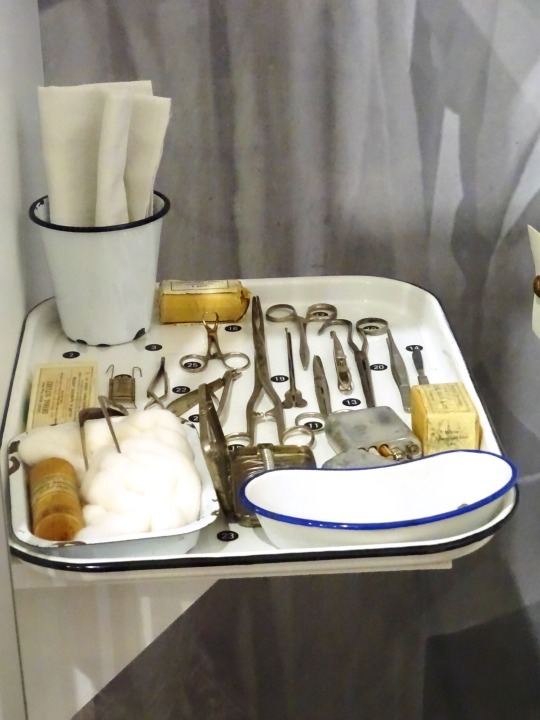


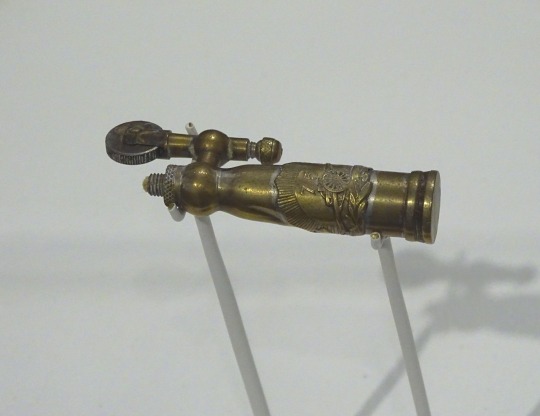
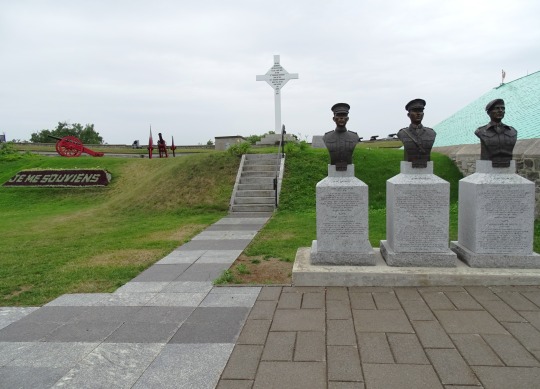


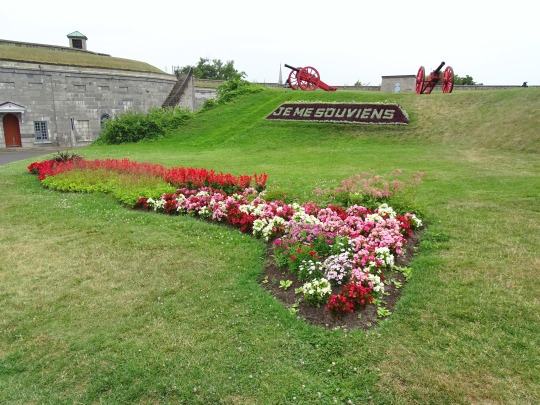
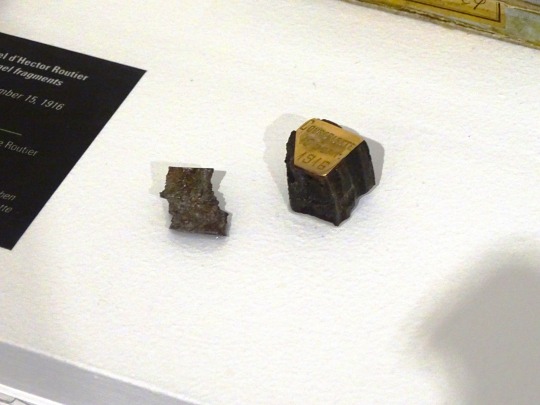
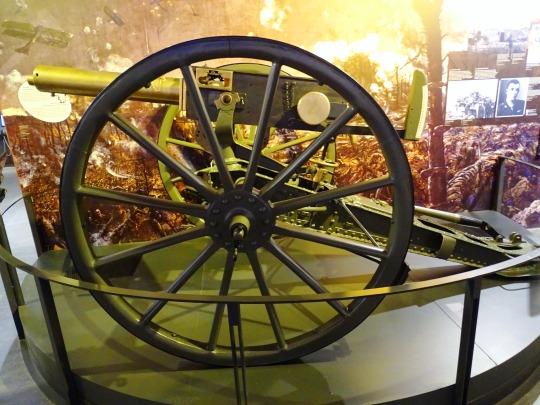
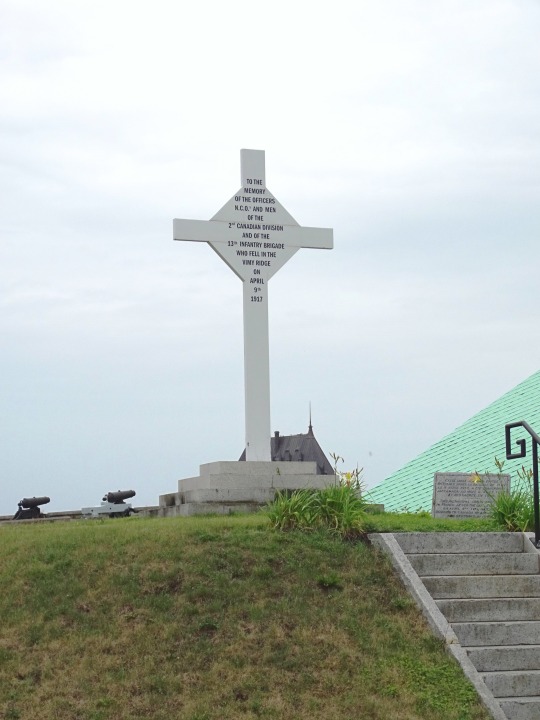
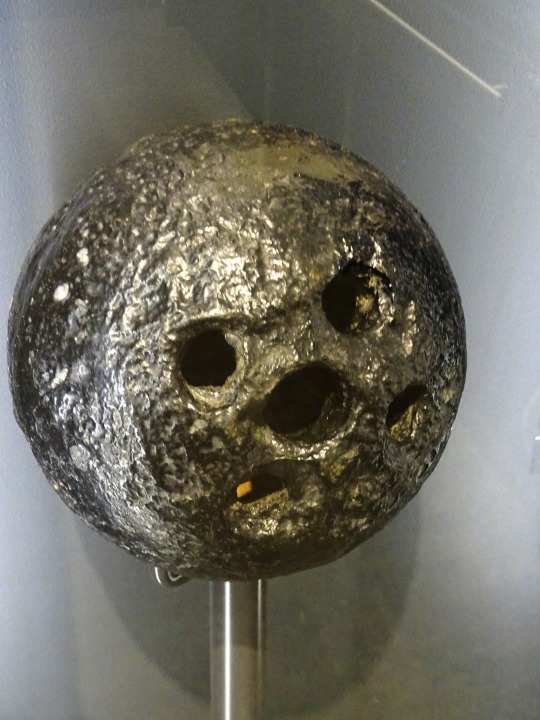

The Battle of Arras began with Canadian Corps executing a massive assault on Vimy Ridge on April, 9, 1917.
Vimy Ridge Day
Since 2003, Vimy Ridge Day has been observed on April 9 in Canada to honor and commemorate the Battle of Vimy Ridge, which took place during the First World War at Vimy Ridge, France, in 1917. The Canadian flag on Parliament Hill’s Peace Tower in Ottawa is required to be lowered to half-mast by law. Wreath-laying ceremonies are held at the Canadian National War Memorial in Ottawa, the Canadian National Vimy Memorial in France, and other locations around the country.
History of Vimy Ridge Day
The Victory of Vimy Ridge Battle was considered a historic moment in the country’s history. The victory was not easy to attain, as years of failed attempts, strategic planning, and preparation to regain Vimy Ridge were endured. The Ridge was under Germany’s control since 1914. Since then, around 150,000 British and French soldiers were sacrificed in the attempt to retake the ridge. The Germans secured their position with machine gun fires, barbed wires, and deep bunkers, making it difficult for any country to take over. Because of their remarkable achievements, Canadian troops gained a reputation as formidable and effective troops. However, the victory came at a horrific price, with over 10,000 people either murdered or wounded.
In April 1917, the Canadian Corps was given the order to seize Vimy Ridge. The heavily constructed seven-kilometer ridge in northern France provided a superb view of the Allied lines. Because earlier French attacks had failed with over 100,000 dead, the Canadians would be attacking over an open graveyard. Canadian and British artillery blasted German positions on the ridge before a week to the battle, killing and torturing defenders. With almost 1,000 artillery pieces putting down withering, supporting fire, the Canadian soldiers would be strongly backed when they went into the fight.
The four divisions of the Canadian Corps fought bravely together for the first time during the Vimy Ridge Battle. Around 15,000 soldiers initiated the battle at 5:30 a.m. on April 9, 1917, marching under a slow-moving bombardment of almost 1000 heavy guns. Most objectives were met on time, and by afternoon, most of the ridge had been taken, except for ‘The Pimple’, a high position on the ridge’s north end, where defenders held out until April 12. By the 12th of April, the Canadians had captured all of their objectives as well as 4,000 prisoners. Vimy Ridge was captured by the Canadians. During the four-day combat, 3,598 Canadians died and 7,000 were injured, making this victory a costly one.
Vimy Ridge Day timeline
1914 German Capture
The Germans gain control of Vimy Ridge at the beginning of World War I.
1917 The First Attack
The Battle of Vimy Ridge begins in the early morning at 5:30 a.m on April 9.
1917 The End of the Battle
The Battle of Vimy Ridge comes to an end on April 12 with a victory for the Canadian Corps.
1918 Canada’s Last Battle in World War I
The Canadian Corps defeats the last German defensive lines with the Vimy tactics on November 1.
Vimy Ridge Day FAQs
What did the Battle of Vimy Ridge reveal?
The triumph of the Canadians at Vimy Ridge revealed that no position was unconquerable to a well-planned and executed attack. This victory had a significant impact on allied planning.
How many lives were lost at Vimy Ridge?
The enormous victory came at a high cost of 3,598 Canadian lives and approximately 7,000 wounded Canadian soldiers.
Does Canada own Vimy Ridge?
Even though the ridge is located in France, it has belonged to Canada as a Canadian National historic site since 1997.
How to Observe Vimy Ridge Day
Wear a Vimy pin
Share your story
Lay wreaths
Canadian people commemorate this day by wearing Vimy pins. The Vimy pin should be worn on the left-hand side of the lapel buttonhole position.
On this commemoration day, we could share our knowledge and stories we heard about the battle and stories with others. Take this opportunity and spread your knowledge about the battle!
The Late Soldiers can be honored by wreath-laying ceremonies. Community members, Veterans, and the public lay wreaths at the National War Memorial to pay their respects.
5 Amazing Facts About The Battle Of Vimy Ridge
Land for memorial
Dream memorial
The great endeavor
A historic site
Standing tall on the hill
The French government awarded the people of Canada perpetual use of the land for the battlefield park that houses the Canadian National Vimy Memorial in 1922.
Walter Seymour Allward, a Canadian artist and architect, constructed the Vimy memorial — he once told a group of friends that the design's form came to him in a dream.
On July 26, 1936, it was dedicated by King Edward VIII, in the presence of President Albert Lebrun of France and 50,000 or more Canadian and French soldiers and their families, after an eleven-year construction period costing $1.5 million.
Sheila Copps, then Minister of Canadian Heritage, recognized the Canadian National Vimy Memorial as a Canadian National Historic Site on April 10, 1997.
The National Vimy Memorial overlooks the 1917 battlefield in Canada and is located on Hill 145.
Why Vimy Ridge Day is Important
It honors bravery
The winning tactics
It celebrates unity
Although many lives were lost in the battle, it still stands as an important historic moment in the history of Canadian Bravery. It is celebrated as a remembrance of the bravery of the soldiers.
The Canadian Corps went through a lot of training before the battle. The tactics framed by the corps were so clever that they helped win other battles also.
All four Canadian corps fought together in this battle as an alias of the British to regain Vimy Ridge. This celebrates unity!
Source
#Royal 22e Régiment Museum#Vimy Ridge Cross#Citadelle of Quebec#travel#Quebec City#Québec#The Road to Vimy and Beyond#Fort George#Halifax#Halifax Citadel National Historic Site of Canada#Nova Scotia#summer 2018#2015#WWI#World War One#Army Museum Halifax Citadel#Battle of Arras#started#9 April 1917#anniversary#Canadian history#World War I#WWOne#Vimy Ridge Day#original photography#vacation#tourist attraction#cityscape#architecture#landmark
1 note
·
View note
Text
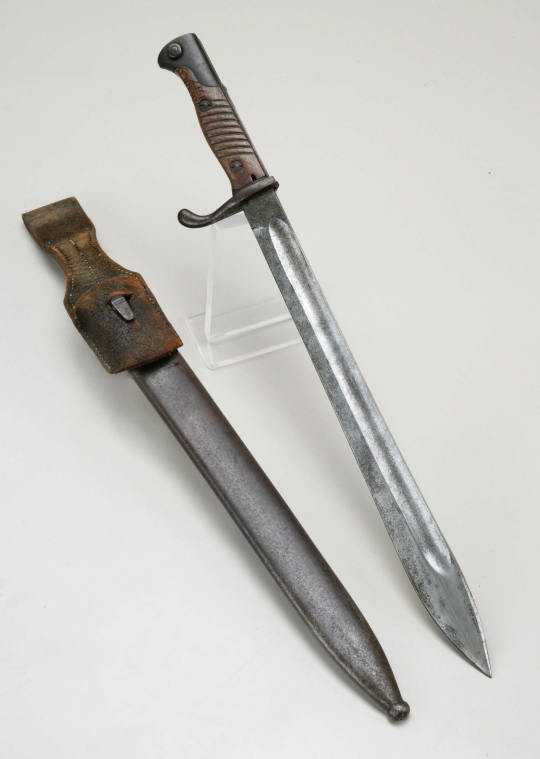
This German Seitengewehr bayonet with leather frog bears the inscription 'VIMY RIDGE APRIL 9 1917'. Captain William Murray Goodwin of the Canadian Engineers found it after the attack.
#world war 1#historical photos#1917#history#canadian history#ww1#ww1 poetry#ww1 stories#ww1 art#ww1 history#wwi#world war one#The Great War#The First World War
63 notes
·
View notes
Text
Headcanons of what years the Papas (and Sister Imperator) were born + explanation using math and Kiss the Go-Goat (please kill me)
Because I am losing my fucking mind. If any of you ever questioned my mental stability, this is the proof that I have none. - Jez
Papa Nihil - 1917
Going with the general headcanon of him dying at 103 years back in 2020, Nihil would have to be born in 1917. This would make him 52 during the Kiss the Go-Goat incident in 1969.
He would have Secondo and Terzo at 42/43, depending on the month of his birthday.
Sister Imperator - 1935
I've always assumed Nihil and her have a big age gap, considering how different their states are when they're old. She also looks really young in Kiss the Go-Goat, so I decided to go with the age her absolutely beautiful actress was back then, which is 34. This makes her 88 now.
Primo - 1932
He was said to be 80 when he left the stage in 2012, which means he would be 37 during the Kiss the Go-Goat. This also implies Nihil was 15 when Primo was born. It would mean Primo was 86 when he died.
He would also be around 27/28 when his younger brothers were born.
His age while performing would be 76 years old in the beginning and 80 in the end.
Secondo - 1959
Him and Terzo are mostly justified by the Ghostpedia than anything else. They were said to be in their late 50s/early 60s when they died in 2018. Secondo has his date of birth listed as "circa 1950s", while Terzo has his listed as "circa 1960s" despite being only three months apart. So I'm assuming he was born in like novemeber/december of 1959.
This would make him 9 during the Kiss the Go-Goat incident, seeing as it happened in September. It would also make him 58 when he died, since they died in April (aka before his birthday).
His age performing would be 53 in the beginning and 56 in the end.
Terzo - 1960
I pretty much explained everything in the note under Secondo - Ghostpedia, year of death, the three months difference between them... This makes me assume he must've been born in january/february of 1960.
Just like Secondo, this makes him 9 during Kiss the Go-Goat and 58 when he died.
His age performing would be 55 in the beginning and 57 in the end.
Copia - 1970
In Kiss the Go-Goat, we can see that it's hinted that Sister is in early stages of pregnancy in September of 1969. That would imply he was born somewhere next year, probably around June. This makes him 53 this year and 50 when he was anointed Papa.
When he started performing, he would be 48.
#ghost band#ghost bc#ghost#papa nihil#papa emeritus i#papa emeritus ii#papa emeritus iii#papa emeritus iv#sister imperator#primo#secondo#terzo#copia#cardinal copia
236 notes
·
View notes
Photo
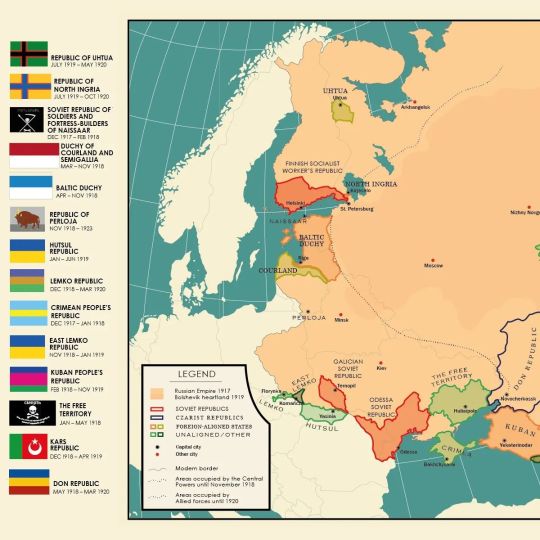
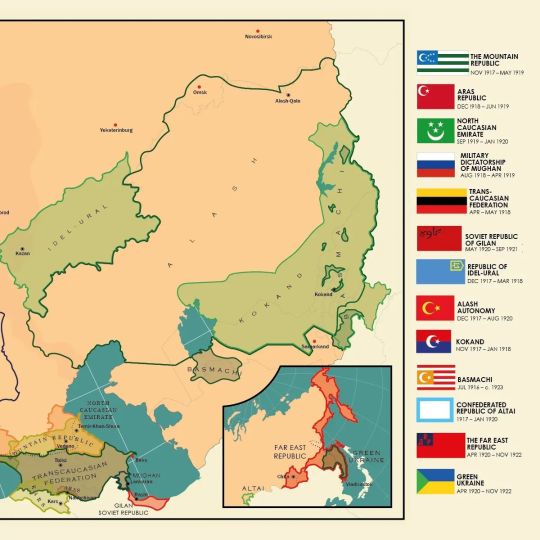
Temporary states during the Russian Civil War (1917–1922)
Anders Kvernberg (Oslo, 2018)
via cartesdhistoire
The Russian civil war (Oct. 1917-summer 1922) pitted Reds (communists), Whites (tsarists led by Wrangel, Kolchak, Denikin, Yudenitch) & Greens (armies of peasants facing Whites & Reds) against each other. In this chaos, many states have a brief independent life.
The largest is the Far Eastern Republic, a Bolshevik puppet state (from which Green Ukraine seceded). The smallest are the Republic of Perloja, limited to a Lithuanian village, presided over by a veteran of the Tsarist army, & the Soviet Republic of Naissaar, proclaimed in a fort on an Estonian island in December. 1917 by 82 Bolshevik sailors (hunted by the Germans on February 24, 1918).
The German occupiers signed a first treaty in Brest-Litovsk on February 9. 1918 with Ukraine then a second on March 3 with the Bolsheviks. Germany seizes Poland, Lithuania & Courland while Finland, Estonia, Latvia & Ukraine become independent under German control.
The Ukrainian People's Republic (non-Bolshevik), autonomous since the spring of 1917, was overthrown by the coup d'état of the conservative general Skoropadsky. With German support, he established the Hetmanate (April–Dec. 1918) and was then ousted from power during an uprising led by Simon Petliura & his (non-Bolshevik) Ukrainian People's Army. The Ukrainian republic was restored until 1921, not without first having to fight the libertarian Ukraine (or Makhnovshchina), a revolutionary peasant movement led by Nestor Makhno, who capitulated to the Bolsheviks in August 1921. Other states on Ukrainian territory are the Bolshevik Republic of Odessa, the Lemko Republic, the Komańcza Republic (or Eastern Lemko Republic) & the Hutsul Republic. At the same time, in the east of Ukraine, the anti-Bolshevik Don Cossack Republic was formed.
No state survived the creation of the USSR on December 30. 1922.
89 notes
·
View notes
Text
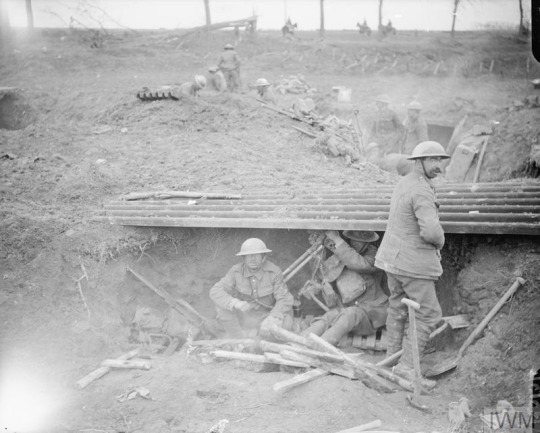
British troops in German trenches at Feuchy captured by 9th Division on 9 April 1917.
19 notes
·
View notes
Text

1918 04 Remember me - Russell Smith
Remember Me? depicts a hypothetical but plausible encounter between and Bristol F2.b of 48th Squadron, RAF and a Fokker Dr.1 triplane piloted by Leutnant d. R. Friedrich "Fritz" Kempf of Jasta 2 (Boelcke). The scene depicts Kempf zooming up and past the Bristol, catching the crew by surprise. The client was fairly specific about the attitudes and positions of the aircraft, but he left the overall composition and the choice of Bristol markings up to me.The Bristol Fighter was a maneuverable, heavily armed two-seater biplane, and one of the most successful fighters of the war. It got off to a poor start during "Bloody April" when it was introduced to the Western Front by the inexperienced pilots. Believing that the aircraft was structurally weak, pilots avoided violent maneuvers during combat. It was soon realized, however, that the Bristol fighter was actually a very sturdy aircraft that could be maneuvered as if it were a single seat fighter with rear protection. Bristol crews met with great success by using their aircraft in that capacity. By the end of the war over 240 pilots and gunners achieved ace status in the type. My choice of markings for this particular Bristol was personal. Growing up in SC I often attended the Shawfest airshow at Shaw Air Force Base located in Sumter. In my 20’s, as a budding aviation artist, I donated a painting to the 20th Fighter Wing which was based at Shaw AFB at the time. For those reasons I have had long felt a familiar connection to Shaw AFB. A few years back, though that connection became very personal. While doing some research on Ancestry I found that I had a great great grandfather who was a Shaw and who was born in Sumter, SC. I knew immediately there had to be a connection to Shaw AFB. After further research I came to find that Shaw AFB was named after 1st Lt. Ervin David “Molly” Shaw, the first Sumterite killed in the WWI & the only Sumter Aviator to die in combat. Shaw served with the 48th Squadron, RAF, British Expeditionary Force. In combat, he is credited with shooting down two enemy aircraft. On July 9, 1918, well behind enemy lines on a scouting mission, he and his British observer were greatly outnumbered by enemy scout planes and they perished in battle. They were flying Bristol F2b B-1113 at the time. As it turns out, 1st Lt. Ervin David Shaw, after whom Shaw AFB is named, was my great-grandmother’s cousin!Frederich "Fritz" Kempf was born in May 1894 in Freiburg in the town of Breisgau in the southwest of Baden-Württemberg. At age 19, he joined infantry in October 1913 and by August of the following year was promoted to Unteroffizier . After being wounded in battle and a lengthy hospital stay he applied for a transfer to the Luftstreitkraefte. Once accepted he arrived at FEA 3 in Gotha on May 6, 1915. He was then sent back to Freiburg to complete training and then on to FEA 9 at Darmstadt at the end of November 1915. In March 1917, after serving with various aviation units, he received the Iron Cross 1st Class and joined Jasta 2 "Boelcke". He scored his first victory on 29 April - a BE2c near Le Pave. His second was a Sopwith Pup on 5 June at Masnieres, then the 3rd was a Camel on 20 Oct. at Gravenstafel.He was sent to Jasta-Schule I as an instructor , returning to Jasta Boelcke in January 1918. On 8 May he scored his fourth victory, a Camel west of Steenwerke. He returned to Jasta-Schule I in August 1918 where he served until the end of the war. Although he only had 4 victories to his credit at war’s end, Kempf was none the less a respected and valued member of Jasta Boelcke. He died in August 1966.Of the aircraft that Fritz Kempf flew during his wartime career, perhaps the most recognizable were a pair of Fokker Dr.1 triplanes which carried similar
44 notes
·
View notes
Text

München, February 22, 1943 / 2024
«Einer muss doch schließlich mal damit anfangen. Was wir sagten und schrieben, denken ja so viele. Nur wagen sie es nicht, es auszusprechen.» – Sophie Scholl, Justizpalastes, München, February 22, 1943
«Die Verurteilte war ruhig und gefasst.»
(Protokoll über die Vollstreckung des Todesurteils des Volksgerichtshofes an Sophie Scholl, München, den 22. Februar 1943)
«freiheit»
(the reverse side (detail) of a document belonging to the Chief Prosecutors, February 21, 1943, with handwriting «freedom» by Sophie Scholl)
Sophie Scholl (May 9, 1921 – February 22, 1943), student
Hans Scholl (September 22, 1918 – February 22, 1943), student
Christoph Probst (November 6, 1919 – February 22, 1943), student
Alexander Schmorell (September 16, 1917 – July 13, 1943), student
Kurt Huber (October 24, 1893 – July 13, 1943), professor
Willi Graf (January 2, 1918 – October 12, 1943), student
and
Hans Konrad Leipelt (July 18, 1921 – January 29, 1945), student
Margaretha Rothe (June 13, 1919 – April 15, 1945), student
Reinhold Meyer (July 18, 1920 – November 12, 1944), student
Friedrich Geussenhainer (April 24, 1912 – April 1945), student
Katharina Leipelt (May 28, 1893 – January 9, 1944), dr. rer. nat.
Elisabeth Lange (July 7, 1900 – January 28, 1944)
Margaretha Mrosek (December 25, 1902 – April 24, 1945)
Kurt Ledien (June 5, 1893 – April 23, 1945), dr. jur.
«Das wird Wellen schlagen»
«Allen!»
(image: Sophie Scholl, ca. early-1940s, in Christine Hikel, Sophies Schwester. Inge Scholl und die Weiße Rose, Oldenbourg Verlag, München, 2013, p. 94)
#weiße rose#sophie scholl#hans scholl#christoph probst#alexander schmorell#kurt huber#willi graf#hans konrad leipelt#margaretha rothe#reinhold meyer#friedrich geussenhainer#katharina leipelt#katharina leipelt baron#elisabeth lange#margaretha mrosek#margaretha mrosek schram#kurt ledien#christine hikel#inge scholl#weiße rose stiftung#oldenbourg verlag#studentenwohnheim geschwister scholl#1890s#1900s#1910s#1920s#1940s
21 notes
·
View notes
Text
Rudolf Hess

This is Rudolf Hess, Hitler's ''dolphin'' timeline:
1894: He was born in Alexandria, Egypt.
1908: He returned to Germany with his family.
1914: WWI started.
1914: He enlisted in the 7th Bavarian Field Artillery Regiment, becoming an infantryman.
1914: On 9 November he was transferred to the 1st Infantry Regiment, stationed near Arras. He was awarded the Iron Cross 2nd class and promoted to Gefreiter (corporal)
1915: He was promoted to Vizefeldwebel (senior non-commissioned officer) and received the Bavarian Military Merit Cross.
1916: He was hit by shrapnel in the left hand and arm on 12 June 1916 in fighting near the village of Thiaumont. After a month off to recover, he was sent back to the Verdun area, where he remained until December.
1917: He was wounded on 23 July and again on 8 August.
1917: In October he received promotion to Leutnant der Reserve.
1917: He had been assigned to Jagdstaffel 35b, a Bavarian fighter squadron equipped with Fokker D.VII biplanes.
1918: He was discharged from the armed forces in December 1918.
1918: He joined the Thule Society.
1918: He joined a Freikorps group.
1919: He enrolled in the University of Munich, where he studied history and economics. His geopolitics professor was Karl Haushofer.
1920: He met his future wife, Ilse.
1920: He joined the Nazi Party.
1921: On 4 November he was injured while protecting Hitler when a bomb planted by a Marxist group exploded.
1922: He joined the SA.
1923: He took part in the failed Munich Putsch.
1923: He was arrested and sentenced to 18 months.
1923: He helped Hitler write Mein Kampf.
1924: He was released.
1925: Hitler named Hess his private secretary in April.
1928: He married Ilse Prohl.
1929: Hitler appointed him personal adjutant on 20 July.
1930: Hess became the owner of a BFW M.23b monoplane sponsored by the party newspaper.
1932: Hess was named party Political Central Commissioner.
1933: Adolf Hitler became Reich Chancellor.
1933: He was named Deputy Führer of the NSDAP on 21 April and was appointed to the cabinet, with the post of Reich Minister without Portfolio, on 1 December.
1934: Hess was given the rank of Obergruppenführer in the SS, the second-highest SS rank.
1935: Hess' office was partly responsible for drafting Hitler's Nuremberg Laws.
1938: His only child, Wolf, was born.
1939: The Second World War began.
1939: Hitler made Hess second in line to succeed him, after Hermann Göring.
1941: He flew to Scotland.
1945: The Second World War ended.
1946: At the Nuremberg Trials Hess, charged on four counts, was found guilty.
1946: He was sented to life in prison.
1987: He died.
Sources:
Wikipedia: Rudolf Hess
Military Wiki: Rudolf Hess
if you don't like it go with your life
❗❗I DON'T SUPPORT NAZISM, FASCISM OR ZIONISM IN ANY WAY, THIS IS AN EDUCATIONAL POST❗❗
37 notes
·
View notes
Text
Ein Heldenleben (A Hero's Life) is an expanded version of Manfred von Richthofen's memoir Der Rote Kampfflieger (The Red Baron). In addition to the autobiography, it includes letters from Manfred to his family (like the 1933 edition) and some chapters that were not included in the book, as well as other comments and anecdotes from people who were close to him. It also includes accounts by his brother Lothar von Richthofen.
Overview:
Visit to the Great Headquarters
My Engagement
A flight in an observation balloon
A day at Staffel 11 (by Lothar von Richthofen)
At Jagdgeschwader Richthofen (by a Dutch reporter)
Richthofen as leader and comrade (by Leutnant Friedrich Wilhelm Lübbert, Jasta 11)
In memory of Richthofen (by v. B.)
An encounter (by Emil August Glogau)
The mother about the boy Manfred
Letter by Leutnant Hans Joachim Wolff to Leutnant Lothar Freiherr von Richthofen
How Richthofen shot down his seventy fifth victory (by Leutnant Lampel)
Richthofen (by Erich von Salzmann):
Part 1
Part 2
Part 3
At court for the second time
Letters of Erwin Böhme: Before the war, Erwin Böhme worked as an engineer in East Africa. When the war started he was already 37 years old. This did not stop him and he became a successful fighter pilot, being personally selected by Boelcke to join his fighter squadron. In 1916 he met the daughter of a former business colleague and they fell in love. The following letters are those Böhme wrote to his later fiancée Annamarie during the war days.
[Translated are the parts of the letters where Böhme describes his life as a fighter pilot.]
Landres, 24 June 1916
Kowel, 7 July 1916
Kowel, 3 August 1916
Kowel, 15 August 1916
Bertincourt, 11 September 1916
Bertincourt, 21 September 1916
Somme, 4 October 1916
Somme, 18 October 1916
Lagnicourt, 31 October 1916
Lagnicourt, 12 November 1916
Jagdstaffel Boelcke, 12 December 1916
Partenkirchen, 28 January 1917
Jagdstaffel Boelcke, 8 April 1917
Valenciennes, 25 April 1917
Valenciennes, 9 May 1917
Valenciennes, 3 July 1917
Jagdstaffel 29, 16 July 1917
Jagdstaffel 29, 7 August 1917
Jagdstaffel 29, 17 August 1917
18 August 1917
Jagdstaffel Boelcke, 21 September 1917
“With the aces”, 20 October 1917
Rumbeke, 31 October 1917
Back with the aces again, 31 October 1917
4 November 1917, Sunday morning
Jagdstaffel Boelcke, 14 November 1917
Bavikhove, 16 November 1917
Bavikhove, 19 November 1917
27 November 1917
The End
Rudolf Berthold – a man who never let himself be dissuaded from his convictions. A man who, despite the worst injuries always returned to the front as quickly as possible. A man for whom the war was not over, even if it was over for his country. A summary of Bertholds life can be found in the pinned post over @subtile-jagden
The following are translated diary entries as well as some of his letters.
Before mobilization
It is getting serious!
First challenges
Emergency landing
Important reconnaissance flights during the advance
The most beautiful day of my life!
Finally a pilot!
Buddecke, the dear comrade!
Feldfliegerabteilung 23
End of 1915
Single seater fighter unit Vaux and the first victories
An unfortunate day for Berthold
Back to the unit
Jasta 4, the Pour le mérite and a new challenge
Beginning of 1917
Finally off to Flanders
End of 1918: Ceasefire and revolution
1919 / 1920: Uncertainties, Soldier´s Councils and the Last Fight
Ernst Jünger was a passionate diarist. During his time in the First World War, he filled 14 diaries. Based on these entries, he wrote his popular book Storms of Steel. The diary entries provide additional information, funny stories and reveal his true feelings during this turbulent time.
First experiences
Officer Candidate and Relocation
First Cannonade
First wound
Back at the front
Days at the front and stories from old friends
Quéant
Friendly contact with the enemy
New year, same situtation
A love affair
Officer training course
Back in the trenches and dangerous patrols
Mine warfare and gas attacks
An English prisoner and a funeral
Summer 1916
Battle of the Somme Part 1
A short break from fighting and another injuriy
Wartime conditions
Another injury
30 notes
·
View notes
Text

▌│█║▌║▌║ | ║▌║▌║▌║▌║▌║█│▌
ᴍʏ ʜᴇʀᴏ ᴀᴄᴀᴅᴇᴍɪᴀ;
deku
twenty minutes; ᶠ*ᶜᵏᵉᵈᵍᵒᵒᵇᵉʳ🌶️ you guys hadn’t even been going at it for that long. you were only 20 minutes in and he was already getting squirmy. you smirked, he was so cute….
shoto
getting late; ᶠ*ᶜᵏᵉᵈᵍᵒᵒᵇᵉʳ🌶️ , ᵐᵒᵘʳⁿᶠᵘˡᵍᵒᵒᵇᵉʳ🧅you looked up with curiosity and interest. It was currently 1:30 am and the moon seemed to dance throughout your room in the attic. It was pleasant and it was beautiful…
novalunosis; ᵐᵒᵘʳⁿᶠᵘˡᵍᵒᵒᵇᵉʳ🧅The room was filled ceiling to wood flooring with sweating heads and drunken movements. The bass from the speakers could be heard from down the street. It was "just a reunion" and "no one was really gonna be there" is what you were told….
we’re not getting married; ᵍᵒᵒᶠʸᵍᵒᵒᵇᵉʳ🍬 “we are not getting married!” you exclaimed, hand slamming down your pencil. you were currently in UA’s library which was filled with working students studying for the upcoming exams… [pt. 2]
shoto’s search history; ᵍᵒᵒᶠʸᵍᵒᵒᵇᵉʳ🍬[pt. 2]
lovestruck shoto; ᵍᵒᵒᶠʸᵍᵒᵒᵇᵉʳ🍬
headcanons;
pt. 1 | pt. 2 | pt. 3 | pt. 4 | pt. 5 | pt. 6 | pt.7 | pt.8 | pt.9 | pt .10
dabi
give me the pistol; ᵐᵒᵘʳⁿᶠᵘˡᵍᵒᵒᵇᵉʳ🧅,ᶠ*ᶜᵏᵉᵈᵍᵒᵒᵇᵉʳ🌶️ you didn’t want to do it anymore. the goodbyes and the never knowing when you would see him again. it was tiring. the thing was you weren’t even supposed to miss him…
him filling you up; ᶠ*ᶜᵏᵉᵈᵍᵒᵒᵇᵉʳ🌶️
headcanons;
pt.1 | pt. 2
bakugo
with god as my witness; ᵐᵒᵘʳⁿᶠᵘˡᵍᵒᵒᵇᵉʳ🧅kiri told me i should write this and i thought it’d be a good idea. i considered just calling you but i know your busy with the kids and pregnancy and shit. dammit. i guess i should tell u why i’m texting you this well i’ll just fucking say it then. i love you…
katsuki’s confession; ᵍᵒᵒᶠʸᵍᵒᵒᵇᵉʳ🍬
headcanons;
pt. 1 | pt. 2
denki
headcanons;
pt.1 | pt.2
————
ᴀᴠᴀᴛᴀʀ;
neteyam
let me go; ᵐᵒᵘʳⁿᶠᵘˡᵍᵒᵒᵇᵉʳ🧅the clan would be lying if they said you were the ideal mate for the future Olo'eyktan. You were bad-mouthed, ill-tempered and far too unpredictable even for the Na’vi…
————
1917;
will schofield
wherever you are; ᶠ*ᶜᵏᵉᵈᵍᵒᵒᵇᵉʳ🌶️, ᵐᵒᵘʳⁿᶠᵘˡᵍᵒᵒᵇᵉʳ🧅the soft summer breeze sifted around your bare legs as you sat in your backyard. It was the beginning of April and you could already see the summer pink blossoms on the trees…
CALL OF DUTY;
simon “ghost” riley
life or death, love or hate; ᶠ*ᶜᵏᵉᵈᵍᵒᵒᵇᵉʳ🌶️ you grimaced as the nurse finished wrapping the bandage around your arm. who knew such a minuscule injury would result in you having to spend the night in the nurse’s office…
is that the best you can do; ᵍᵒᵒᶠʸᵍᵒᵒᵇᵉʳ🍬 “is that the best you can do?” simon asked, chuckling underneath his mask. he was supposed to be training you but you could barely land a punch on the six foot soldier…
headcanons;
pt.1 | pt.2
VIKINGS;
ivar the boneless
troublesome; ᶠ*ᶜᵏᵉᵈᵍᵒᵒᵇᵉʳ🌶️ you sat in the main hall as everyone finished celebrating. ivar had just announced the next raids and everyone was more than excited. you, however, weren’t looking forward to being without your husband as you both had just married…
72 notes
·
View notes
Text
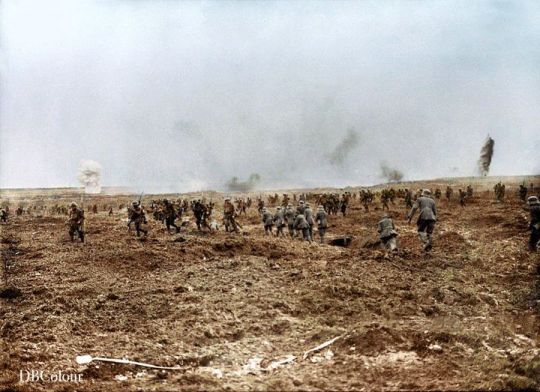
9 April 1917. Battle of Vimy Ridge. 29th Infantry Battalion advancing into “No Man’s Land” through German barbed wire and heavy fire.
13 notes
·
View notes
Photo

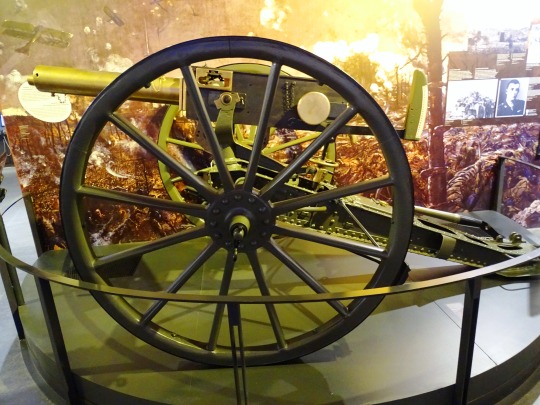
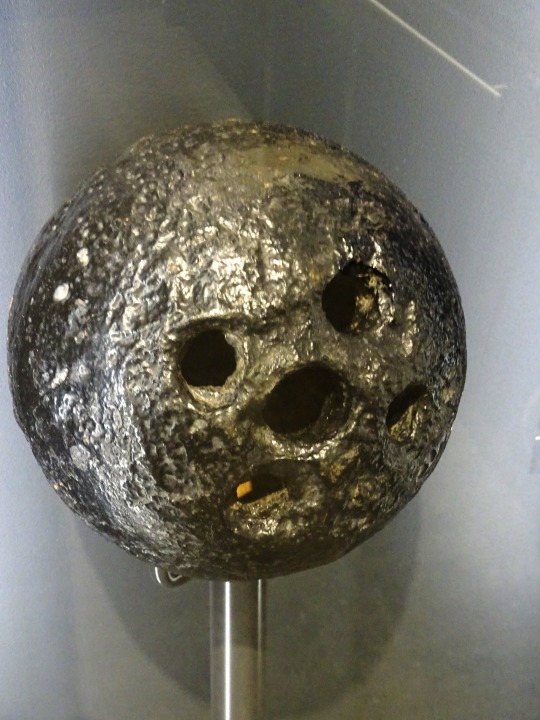






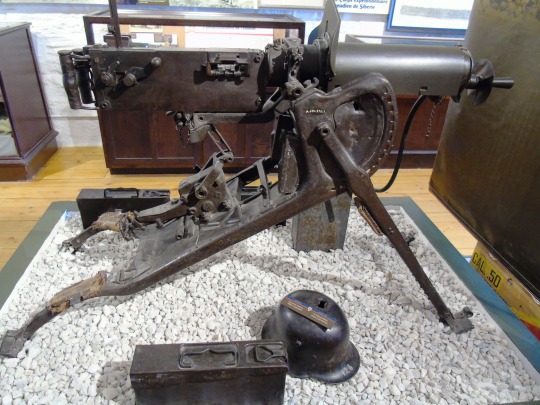
The Battle of Arras began with Canadian Corps executing a massive assault on Vimy Ridge on April, 9, 1917.
Vimy Ridge Day
Since 2003, Vimy Ridge Day has been observed on April 9 in Canada to honor and commemorate the Battle of Vimy Ridge, which took place during the First World War at Vimy Ridge, France, in 1917. The Canadian flag on Parliament Hill’s Peace Tower in Ottawa is required to be lowered to half-mast by law. Wreath-laying ceremonies are held at the Canadian National War Memorial in Ottawa, the Canadian National Vimy Memorial in France, and other locations around the country.
History of Vimy Ridge Day
The Victory of Vimy Ridge Battle was considered a historic moment in the country’s history. The victory was not easy to attain, as years of failed attempts, strategic planning, and preparation to regain Vimy Ridge were endured. The Ridge was under Germany’s control since 1914. Since then, around 150,000 British and French soldiers were sacrificed in the attempt to retake the ridge. The Germans secured their position with machine gun fires, barbed wires, and deep bunkers, making it difficult for any country to take over. Because of their remarkable achievements, Canadian troops gained a reputation as formidable and effective troops. However, the victory came at a horrific price, with over 10,000 people either murdered or wounded.
In April 1917, the Canadian Corps was given the order to seize Vimy Ridge. The heavily constructed seven-kilometer ridge in northern France provided a superb view of the Allied lines. Because earlier French attacks had failed with over 100,000 dead, the Canadians would be attacking over an open graveyard. Canadian and British artillery blasted German positions on the ridge before a week to the battle, killing and torturing defenders. With almost 1,000 artillery pieces putting down withering, supporting fire, the Canadian soldiers would be strongly backed when they went into the fight.
The four divisions of the Canadian Corps fought bravely together for the first time during the Vimy Ridge Battle. Around 15,000 soldiers initiated the battle at 5:30 a.m. on April 9, 1917, marching under a slow-moving bombardment of almost 1000 heavy guns. Most objectives were met on time, and by afternoon, most of the ridge had been taken, except for ‘The Pimple’, a high position on the ridge’s north end, where defenders held out until April 12. By the 12th of April, the Canadians had captured all of their objectives as well as 4,000 prisoners. Vimy Ridge was captured by the Canadians. During the four-day combat, 3,598 Canadians died and 7,000 were injured, making this victory a costly one.
Vimy Ridge Day timeline
1914 German Capture
The Germans gain control of Vimy Ridge at the beginning of World War I.
1917 The First Attack
The Battle of Vimy Ridge begins in the early morning at 5:30 a.m on April 9.
1917 The End of the Battle
The Battle of Vimy Ridge comes to an end on April 12 with a victory for the Canadian Corps.
1918 Canada’s Last Battle in World War I
The Canadian Corps defeats the last German defensive lines with the Vimy tactics on November 1.
Vimy Ridge Day FAQs
What did the Battle of Vimy Ridge reveal?
The triumph of the Canadians at Vimy Ridge revealed that no position was unconquerable to a well-planned and executed attack. This victory had a significant impact on allied planning.
How many lives were lost at Vimy Ridge?
The enormous victory came at a high cost of 3,598 Canadian lives and approximately 7,000 wounded Canadian soldiers.
Does Canada own Vimy Ridge?
Even though the ridge is located in France, it has belonged to Canada as a Canadian National historic site since 1997.
How to Observe Vimy Ridge Day
Wear a Vimy pin
Share your story
Lay wreaths
Canadian people commemorate this day by wearing Vimy pins. The Vimy pin should be worn on the left-hand side of the lapel buttonhole position.
On this commemoration day, we could share our knowledge and stories we heard about the battle and stories with others. Take this opportunity and spread your knowledge about the battle!
The Late Soldiers can be honored by wreath-laying ceremonies. Community members, Veterans, and the public lay wreaths at the National War Memorial to pay their respects.
5 Amazing Facts About The Battle Of Vimy Ridge
Land for memorial
Dream memorial
The great endeavor
A historic site
Standing tall on the hill
The French government awarded the people of Canada perpetual use of the land for the battlefield park that houses the Canadian National Vimy Memorial in 1922.
Walter Seymour Allward, a Canadian artist and architect, constructed the Vimy memorial — he once told a group of friends that the design's form came to him in a dream.
On July 26, 1936, it was dedicated by King Edward VIII, in the presence of President Albert Lebrun of France and 50,000 or more Canadian and French soldiers and their families, after an eleven-year construction period costing $1.5 million.
Sheila Copps, then Minister of Canadian Heritage, recognized the Canadian National Vimy Memorial as a Canadian National Historic Site on April 10, 1997.
The National Vimy Memorial overlooks the 1917 battlefield in Canada and is located on Hill 145.
Why Vimy Ridge Day is Important
It honors bravery
The winning tactics
It celebrates unity
Although many lives were lost in the battle, it still stands as an important historic moment in the history of Canadian Bravery. It is celebrated as a remembrance of the bravery of the soldiers.
The Canadian Corps went through a lot of training before the battle. The tactics framed by the corps were so clever that they helped win other battles also.
All four Canadian corps fought together in this battle as an alias of the British to regain Vimy Ridge. This celebrates unity!
Source
#Royal 22e Régiment Museum#Vimy Ridge Cross#Citadelle of Quebec#travel#Quebec City#Québec#The Road to Vimy and Beyond#Fort George#Halifax#Halifax Citadel National Historic Site of Canada#Nova Scotia#summer 2018#2015#WWI#World War One#Army Museum Halifax Citadel#Battle of Arras#started#9 April 1917#anniversary#Canadian history#World War I#WWOne#Vimy Ridge Day
1 note
·
View note
Text
Starting this off with my favourite tank, the German Sturmpanzerwagen A7V!!
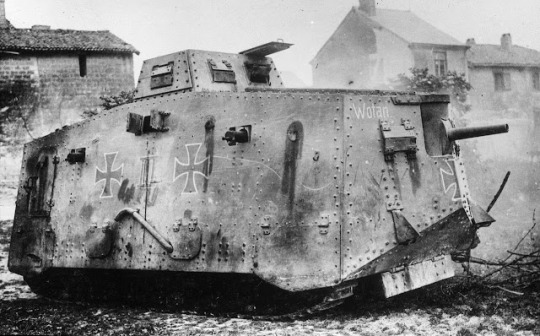
Why on earth is this chunky monstrosity my favourite tank out of every tank ever made? Because it is absolutely awful at everything and I think that's very funny.
The A7V was the first tank ever made by the Germans, it was invented in 1917 and used in the later stages of WW1. This thing was massive, measuring at about 8 metres long (26 feet), 3 metres wide (almost 10 feet), and 3.3 metres tall (almost 11 feet). It also weighed about 36 tons when in combat which caused a lot of problems, namely for its speed and traversal capabilities.
Soldiers could outpace this thing ON FOOT. The A7V had a top speed of only 14 km/h (9 miles/h), which is already pretty slow, but that speed was drastically reduced if the terrain was even a little bumpy, going down to only 6 km/h (4 miles/h). And that was if this thing managed to not break down or get stuck in a shallow ditch.
The Sturmpanzerwagen A7V was highly prone to suddenly failing due to the fact that the tank's track base was literally pulled out of a tractor. It was not a suitable base for a tank at all and made the whole thing unsafe in certain conditions, leading to frequent breakdowns.
The A7V also had only a few inches of ground clearance. This meant that it had issues going over even a slight bump in the ground. It would also fall into ditches constantly. The overhanging and heavy front end meant that if it went over an edge even a little too far, there was no stopping it. Judging by the number of pictures of this thing getting stuck, this was a fairly common occurence.
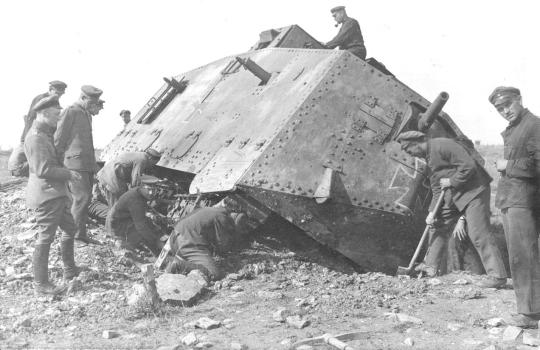
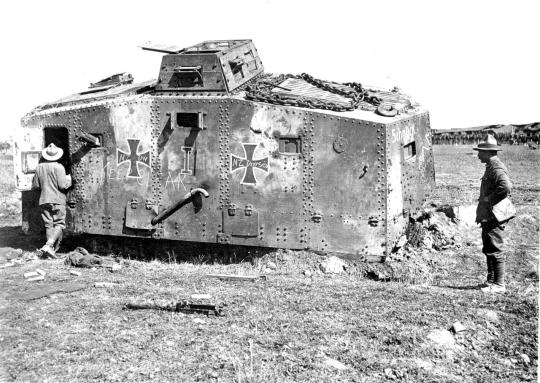
Let's not forget to mention that the driver of the A7V had a 10 meter long blindspot at all times. They were sat in that little box on top of the tank and had the front end of the tank blocking their view!! How anyone thought this was a good idea absolutely baffles me.
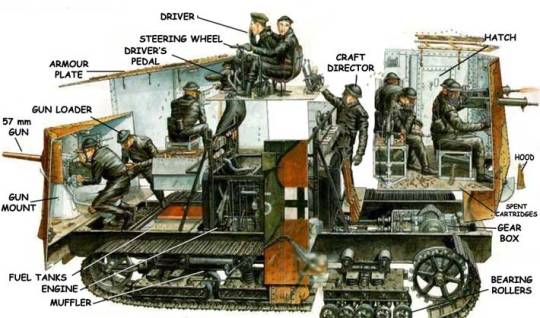
That's a lot of soldiers just to man one tank. This thing required a crew of 18 or more to operate, but due to its absolutely awful armour, none of them were safe!! The Sturmpanzerwagen A7V had near vertical armour plating, which made it highly susceptible to direct hits. Many tanks nowadays have angled plating for this exact reason, because vertical armour does not deflect bullets properly!
Interestingly, the Sturmpanzerwagen A7V was one of the tanks involved in the first ever recorded tank on tank duel! On the 24th of April in 1918, three A7Vs went up against three Brittish Mk. IVs.
The A7Vs lost of course. Brittish tanks, while still clunky, were much better than German tanks at this time.
Only twenty A7Vs were produced before WW1 ended. Many of them were either destroyed during the war, or scrapped afterwards due to their flawed design. Today only one Sturmpanzerwagen A7V remains, the 506 Mephisto, and it's in Australia of all places. The Mephisto was abandoned on the battlefield by its crew and later taken as a trophy by Australian soldiers. It now resides in the Queensland museum in Brisbane.

Sources: X , and my brain, I have this thing's history memorized.
#WW1#History#WW1 history#WW1 tanks#tankposting#tanks#tank#sturmpanzerwagen#sturmpanzerwagen a7v#german tanks
9 notes
·
View notes
Text

Alexandra Feodorovna in Tsarskoe Selo, Spring 1917
April 1 Saturday
9 AM Holy Communion N[icholas], T[atiana], A[nastasia], I. Upstairs: O[lga], M[aria], Al[exei]. O[lga] 36.8, M[aria] 36.4... 11 1/2 Midnight Service. Broke the fast. With tea: Nastinka, Trina, Mme Zizi, C[oun]t and C[ounte]ss Benkend[orff], Val[ya] Dolg[oruly], Mr Gilliard, Vlad[imir] Nik[olaevich][Derevenko], Botkin, Commander, sentry officers.
April 2nd Easter Sunday
20 min in the sun. O[lga] 36.6, M[aria] 36.7
12 1/2 Paschal greetings. Tea: Trina, Nastinka. Sat on the balkony. 6 [o'clock] O[lga] 37.
7PM Vespers in the playroom.
(1917 Diary of Alexandra Feodorovna)
2 notes
·
View notes
Text
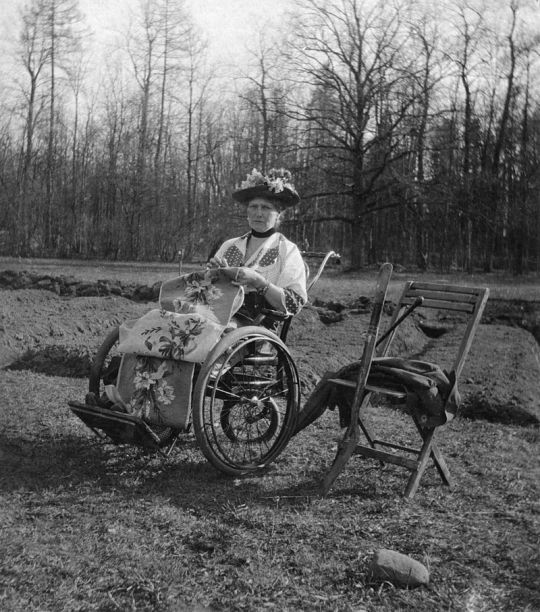
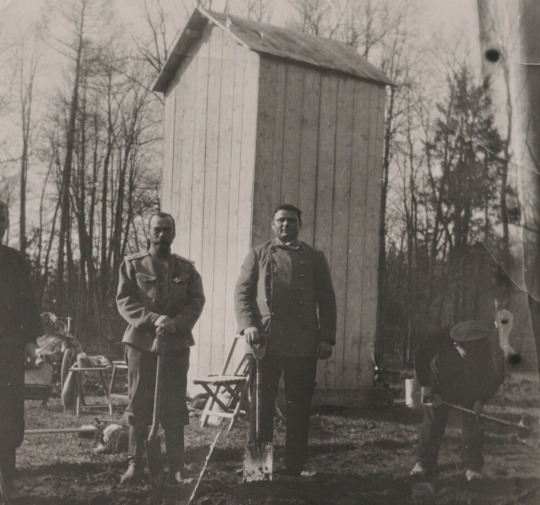

On the photographs: top - Alexandra Feodorovna in her wheel chair outside in the vegetable garden, embroidering, Tsarskoe Selo, April 1917; bottom: Nicolas II with his 'team' working in the vegetable garden in Tsarskoe Selo, spring 1917
'The ‘absence’ of Alexandra Feodorovna
One of the striking observations I made while studying the photographs of the Family for the period of March-July 1917 was the obvious and clear absence of Alexandra Feodorovna on them. Those couple of photographs where she did appear picture her motionless, a sort of frozen. She was not only absent from the photographs and took very little part in the outside activities but she also was absent from her own diary. In the period of March-July 1917, she made just a handful of diary entries on the following dates:
March 1917, Tsarskoe Selo
1, 2, 3, 4, 5, 8, 9, 10, 21, 22, 23, 27
April 1917, Tsarskoe Selo
1, 2, 8, 11, 12, 14, 15, 18, 23, 29, 30
May 1917, Tsarskoe Selo
6, 25, 26
June 1917, Tsarskoe Selo
3, 9, 10, 20
July 1917, Tsarskoe Selo
11, 13, 25, 29, 30, 31
The first time Alexandra Feodorovna made an appearance in ‘public’, e.g. went outside and sat in the garden was on the 11 of April. This occasion found a reflection in the diary entry of Nicolas II: ‘In the afternoon, Alix finally went for a walk with us. Nagorny pushed her in a wheel chair. She watched us work with the ice.’ In her own dairy, Alexandra Feodorovna described her appearance as follows: ‘In my wheel chair [was] in the garden with the others who were working with ice.’ [...] - Seraphima Bogomolova
Read more in Part One: 'Like Kings and Queens, Like Princes and Princesses'
#investigation#research#romanovs#nicolas ii#seraphima bogomolova#evidence#murder mystery#photographs#alexandrovsky palace#tsarskoe selo#spring 1917#Alexandra Feodorovna#vegetable garden#gardening#diaries
2 notes
·
View notes
Photo
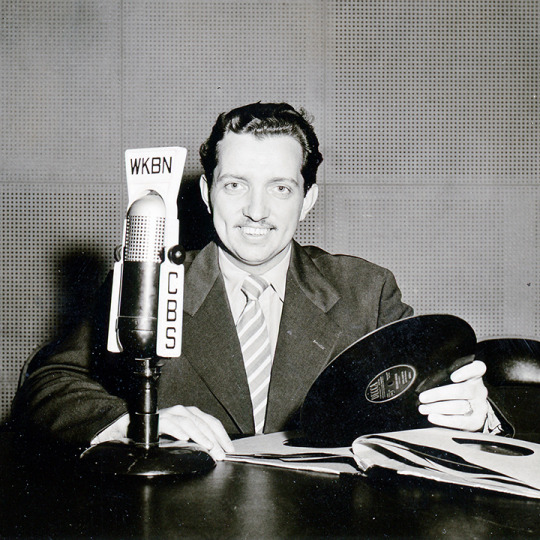
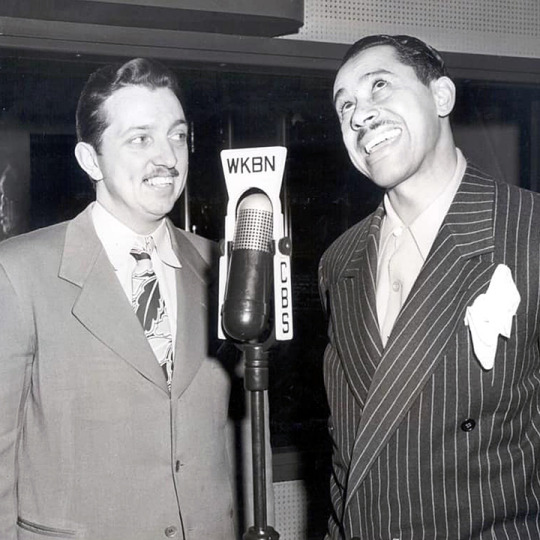
#ThrowbackThursday We originally posted the top photo on October 14, 2015. The caption said only: “Chick Lind, disc jockey, WKBN radio (Youngstown, Ohio).”
On May 8, 2023, we received more information from the “WKBN Reunion” page on Facebook. They found his real name was Charles Joseph Lindgren, born in Manhattan on April 9, 1917. He worked at KLZ in Denver CO, NBC in Rockefeller Plaza, WKBN in Youngstown OH, WSRS in Cleveland OH, then as Associate Director in Films, Radio, and Television for Fuller, & Smith & Ross in Cleveland OH. After Cleveland, he moved down to Miami FL, then moved back north to be near his family. He passed away on April 18, 1958, in Newark, NJ.
Another commenter added, “The interesting thing about this picture is that the microphone pictured is a wooden prop used for pictures only so that the expensive broadcast mics stayed in the studio.”
WKBN Reunion also shared the second photo of Chick Lind with legendary jazz singer Cab Calloway at the WKBN Studio. (Courtesy of the Business and Media Archives of the Mahoning Valley Historical Society.)
9 notes
·
View notes